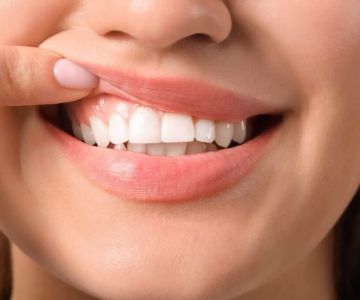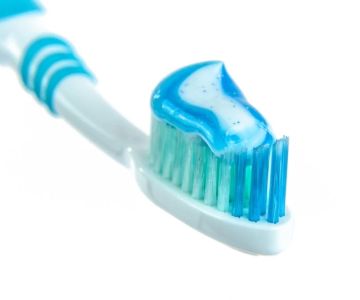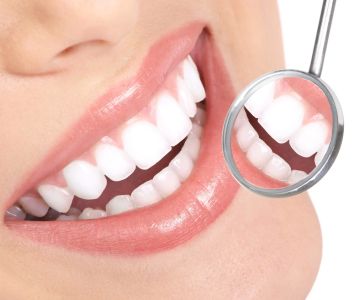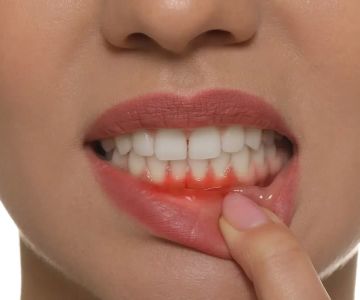What is Periodontal Disease?
Periodontal disease, also known as gum disease, refers to the inflammation and infection of the tissues that support your teeth. Poor oral hygiene is a common cause, but genetics and other factors can also play a role. Symptoms may include bad breath, bleeding, swollen gums, loose teeth, and pain when chewing. There are four stages of gum disease: gingivitis, mild periodontitis, moderate periodontitis, and advanced periodontitis. If left untreated, it can lead to gum recession and tooth loss.
Symptoms and Causes
The symptoms of periodontal disease can vary. They may include reddish or purplish gums, bleeding, soreness, bad breath, an unpleasant taste, pain when chewing, gum recession, loose teeth, and a change in the way your teeth fit together. The main cause of gum disease is the buildup of dental plaque, but risk factors such as smoking, poor oral hygiene, diabetes, autoimmune diseases, hormonal changes, stress, genetics, and heart disease can increase the likelihood of developing it. The bacteria that cause gum disease can be passed from person to person, especially through prolonged contact involving saliva.
Diagnosis and Tests
Dentists diagnose periodontal disease during a routine examination by looking for plaque buildup and asking about symptoms. They may refer you to a periodontist for further evaluation and treatment. Periodontists use tools like a periodontal probe to measure the pockets around your teeth and determine the amount of bone loss. Dental X-rays are also taken to show areas of bone loss and monitor changes over time.
Management and Treatment
Although gum disease is not curable, it can be managed with appropriate treatment. The type of treatment depends on the severity of the condition and various factors such as your health, smoking status, and past treatments. For very early periodontal disease (gingivitis), routine dental cleaning and improved oral hygiene may reverse the condition. Scaling and root planing is recommended for mild gum disease. People with moderate to advanced gum disease may need pocket reduction surgery, bone grafting, gum grafting, guided tissue regeneration, or LANAP. Platelet-rich fibrin (PRF) and platelet-rich plasma (PRP) can also be used to speed up healing and tissue regeneration.
Prevention
In most cases, gum disease can be prevented with consistent and proper oral hygiene. This includes brushing your teeth two to three times a day, flossing daily, using an antibacterial mouthwash, avoiding smoking and tobacco use, and visiting the dentist for regular cleanings and exams. Even if you are prone to gum disease due to genetics or other health conditions, more frequent cleanings with a dental hygienist can help lower your risk.
Outlook / Prognosis and Living With
Periodontal disease is not life-threatening, but it can lead to other health conditions if the infection spreads. With proper treatment, it can be managed, and early detection is crucial for better oral health. If you have symptoms like bleeding, tender, or swollen gums, see a dentist promptly. When diagnosed with gum disease, it's important to ask your periodontist questions such as the stage of the disease, the type of treatment needed, sedation options, recovery time, and the frequency of dental cleanings.
Gum care is of utmost importance for maintaining a healthy mouth and overall well-being. By understanding the causes, symptoms, and available treatments of periodontal disease, as well as taking preventive measures such as maintaining good oral hygiene, you can significantly reduce the risk of developing gum problems and keep your teeth and gums in optimal condition. Regular visits to the dentist and prompt action at the first sign of any issues are essential for a lifetime of a healthy smile.






 Fine Dental Care4.0 (373 review)
Fine Dental Care4.0 (373 review) Perry Street Dental5.0 (200 review)
Perry Street Dental5.0 (200 review) Westridge Dental Group: Kasper Robert DDS4.0 (11 review)
Westridge Dental Group: Kasper Robert DDS4.0 (11 review) River Run Dental4.0 (1958 review)
River Run Dental4.0 (1958 review) Norton Family Dental4.0 (747 review)
Norton Family Dental4.0 (747 review) Dr. Michael P. Rutz, DMD5.0 (22 review)
Dr. Michael P. Rutz, DMD5.0 (22 review) The Importance of Oral Health Education During Pregnancy for a Healthy Pregnancy
The Importance of Oral Health Education During Pregnancy for a Healthy Pregnancy Best Tips for Brushing Your Teeth Properly for Healthy Gums: Essential Techniques for Oral Health
Best Tips for Brushing Your Teeth Properly for Healthy Gums: Essential Techniques for Oral Health Why Skipping Dental Checkups Can Lead to Bigger Oral Health Problems
Why Skipping Dental Checkups Can Lead to Bigger Oral Health Problems Advantages of Porcelain Dental Restorations
Advantages of Porcelain Dental Restorations How Can Diabetes Cause Tooth and Gum Problems? Preventing and Managing Oral Health Issues
How Can Diabetes Cause Tooth and Gum Problems? Preventing and Managing Oral Health Issues Healthy Habits for Promoting Good Oral Health and Hygiene: Tips for a Healthy Smile
Healthy Habits for Promoting Good Oral Health and Hygiene: Tips for a Healthy Smile